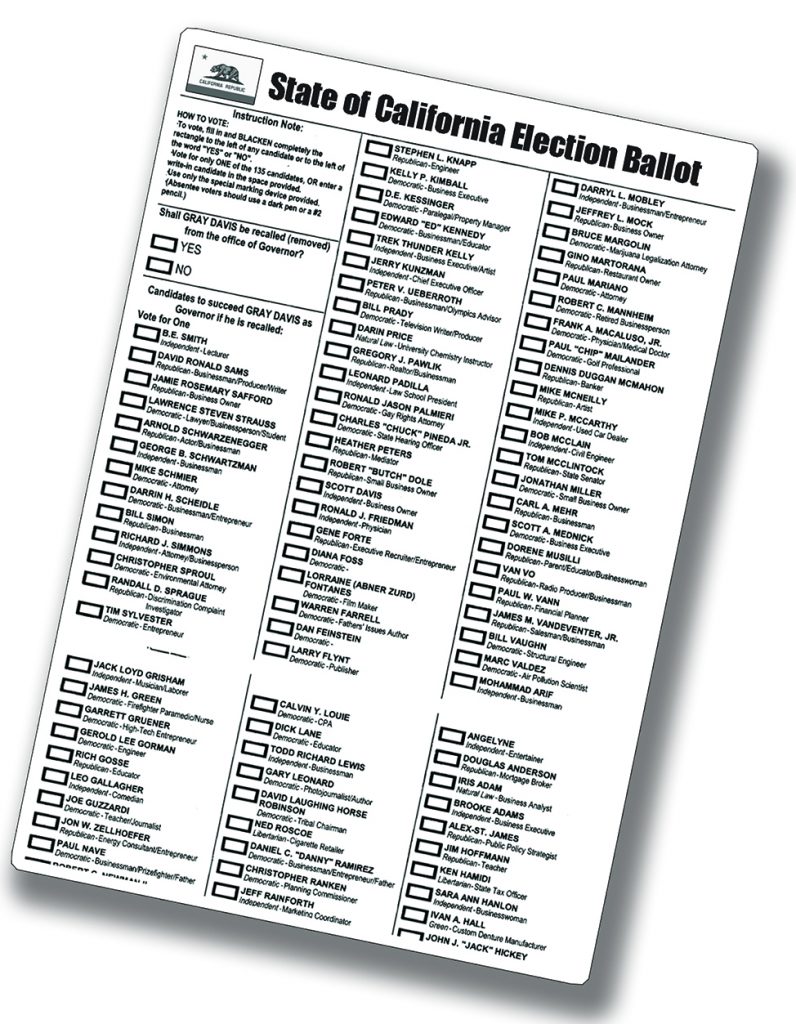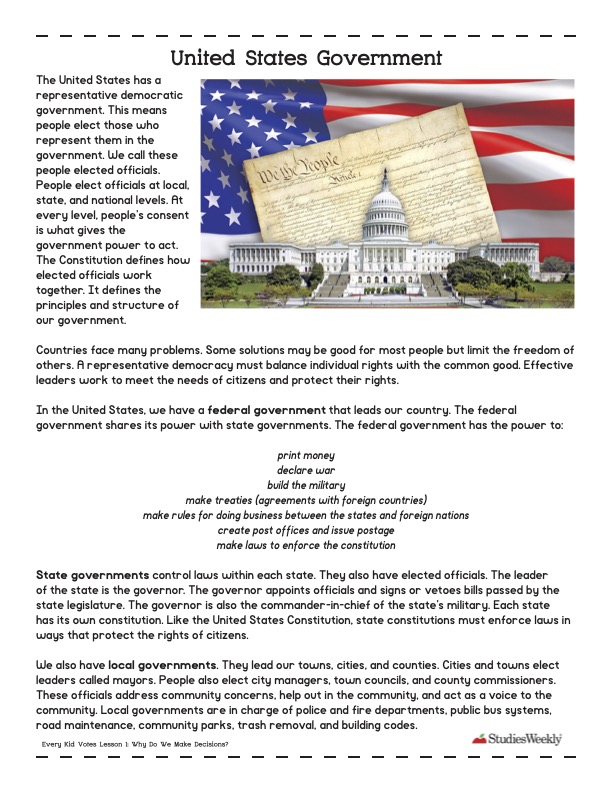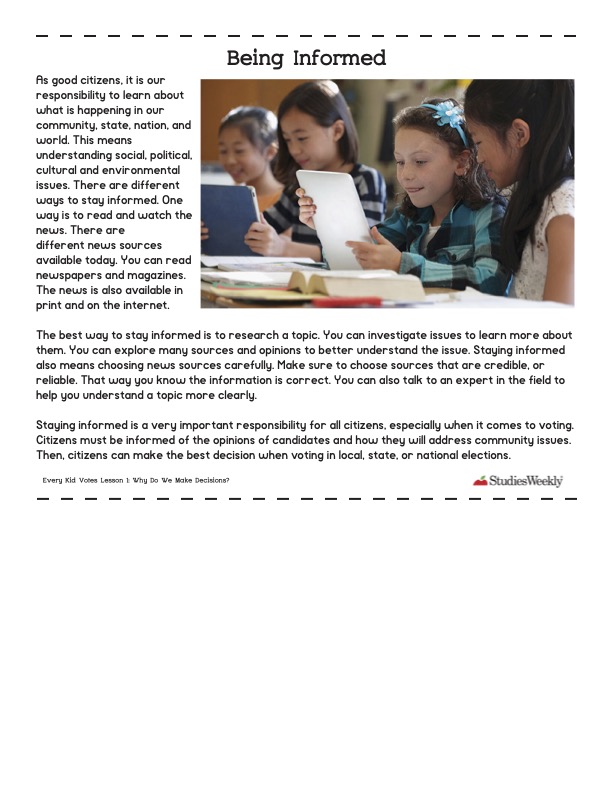Lesson 1: Why Do We Make Decisions? (Grades: 4-5)
Objective for the Lesson:
Students will understand the decision-making process on both an individual and a group level.
Weekly Summary:
When individuals and groups have to make choices, as they do during political elections, they often go through an intensive decision-making process.
Student Expectations:
Students will understand that people have to gather facts before they can make good decisions.
Students will understand that making decisions often involves compromise.
Students will understand how the concepts of minority and majority relate to making group decisions.
Students will understand that decisions are often made by individuals who are chosen to represent a group, not by the group as a whole.
Vocabulary:
ballot: a slip or sheet of paper, cardboard, etc., on which a person marks their vote
compromise: a settlement of differences by mutual concession
decision: the act of or need for making up one’s mind
delegate: a person designated to act for or represent others
influence: to affect the actions, behavior, opinions, etc., of others
majority: the greater part or number; a number that is more than half of the total
minority: the smaller part or number; a number that is less than half of the total
vote: a formal expression of opinion or choice made by an individual or group
Think Deeply:
With a partner, brainstorm some of the important decisions that your city government has to make for the safety and growth of the community. Then, write a persuasive paragraph that expresses your opinion about one of the decisions. Make sure that you support your opinion with valid reasoning.
Lesson Plan:
- In small groups or as a class, have the students discuss the following questions:
- When do we make decisions? (Answers may vary. Possibilities include food, clothing, chores, entertainment, etc.)
When do people make decisions by and for themselves? (Answers may vary. Possibilities include: deciding what snack to eat, deciding what color to use in a picture, deciding what socks to wear, etc.) - What information do you need to know to make these decisions? (Answers may vary. Possibilities include: what is available to eat, what the drawing is about, what color the socks are, whether the socks match the outfit, etc.)
- Are there outside influences that affect your decisions? (Answers may vary. Possibilities include parents, rules and laws, teachers, peers, media, etc.)
- How do these outside influences affect decisions? (Answers may vary.)
- When do we make decisions? (Answers may vary. Possibilities include food, clothing, chores, entertainment, etc.)
- Have the students write down how and why they picked the clothes that they wore today. Then, ask them to share what they wrote with a neighbor and compare their decision-making processes.
- Pose the following questions for discussion:
- When would a group of people need to make a decision? (Answers may vary. Possibilities include: where to go out to eat, what game to play, what movie to watch, etc.)
- What might influence these group decisions? (Answers may vary. Possibilities include cost, transportation, allergies, age, location, individual ability, individual preference, gender, etc.)
- How can groups decide what to do? (Answers may vary.)
- Explain that there are four typical ways to make decisions. First, one person can decide on behalf of a whole group. For example, in a monarchy, a king or queen makes decisions for a country. Second, everyone can contribute ideas individually, then the entire group votes. The option with the most votes, or the majority, wins. Third, a group can compromise. For example, if a group of friends can’t decide between riding bikes and playing video games, they could choose to ride bikes first and play video games later. Lastly, if there is a larger group, divide it into small groups. These small groups decide on something, then they choose a delegate to represent their interest within the larger group. All of the groups’ delegates meet to make a decision that benefits everyone.
- Review the vocabulary words and their definitions with the students. Create a chart on the board that includes the words and their definitions for the students to reference.
- Have a class discussion about the following questions:
- What possible problems could arise during the decision-making process? (Answers may vary. Possibilities include: sulking, refusing to participate, trying to influence the decision, etc.)
- How can groups resolve these problems? (Answers may vary.)
Weekly Assessment:
- Pose the following question to the students: If you were required to use a certain writing tool for all your assignments, what would you choose: a pencil, a marker, or a pen?
- Discuss the three options as a class.
- Have the students write down their choices on a ballot or a slip of paper.
- Count the ballots and determine the winning choice.
- Have a class discussion about the following questions:
- Who would supply the writing tools?
- Does this issue change how you would have voted?
Alternative Assessment:
- Repeat step one from above.
- Divide the class into small groups.
- Instruct the groups to discuss the options and decide on a writing tool.
- Ask each group to select a delegate who will explain and defend their group’s choice.
- Have the delegates meet, discuss, and decide on the final choice for the class.
Related Media:
Sample ballot:



